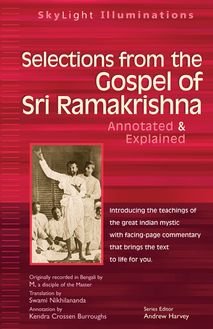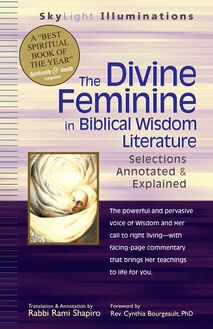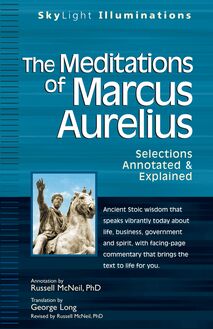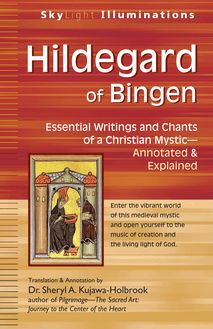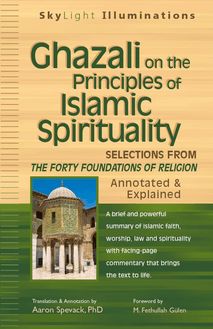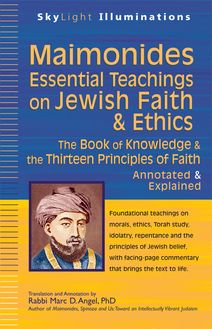The Sacred Writings of Paul , livre ebook
199
pages
English
Ebooks
2011
Vous pourrez modifier la taille du texte de cet ouvrage
Obtenez un accès à la bibliothèque pour le consulter en ligne En savoir plus
Découvre YouScribe en t'inscrivant gratuitement
Découvre YouScribe en t'inscrivant gratuitement
199
pages
English
Ebooks
2011
Vous pourrez modifier la taille du texte de cet ouvrage
Obtenez un accès à la bibliothèque pour le consulter en ligne En savoir plus
Publié par
Date de parution
03 novembre 2011
Nombre de lectures
0
EAN13
9781594734045
Langue
English
Fresh insight into Christianity’s earliest teachings can be a
guide for your own spiritual journey.
The Apostle Paul, who wrote many of the books in the New Testament, was a fearless and revolutionary religious innovator. In a society where slaveholding was commonplace and women were little more than servants, he preached a groundbreaking equality founded on a new spiritual identity. In an imperial political system that demanded unquestioning allegiance, Paul told his readers they were citizens of heaven. Yet Paul diverged from many of Jesus’s own teachings about the world and God’s kingdom, and his writings have been used to justify slavery, defend violence toward women, and vilify followers of other religious paths.
With fresh translations from the original Greek and insightful yet unobtrusive commentary, Ron Miller guides you through the complexities of Paul’s writings. He explores Paul’s limitations and sometimes harmful legacy, but also highlights Paul’s deep connection with God’s Spirit. This connection led to Paul’s penetrating insights on how to live a life filled with spiritual vigor, experience profound joy even in the face of trouble, and understand the fundamental power of love to overcome any obstacle.
Whether you are familiar with Paul’s writings or have no previous knowledge of them, this SkyLight Illuminations volume will open a door to let you experience the power of Paul’s words for yourself.
Publié par
Date de parution
03 novembre 2011
Nombre de lectures
0
EAN13
9781594734045
Langue
English
Books in the SkyLight Illuminations Series
The Art of War-Spirituality for Conflict: Annotated & Explained
Bhagavad Gita: Annotated & Explained
The Book of Mormon: Selections Annotated & Explained
Celtic Christian Spirituality: Essential Writings-Annotated & Explained
Chuang-tzu: The Tao of Perfect Happiness-Selections Annotated & Explained
Dhammapada: Annotated & Explained
The Divine Feminine in Biblical Wisdom Literature: Selections Annotated & Explained
Ecclesiastes: Annotated & Explained
The End of Days: Essential Selections from Apocalyptic Texts-Annotated & Explained
Ethics of the Sages: Pirke Avot-Annotated & Explained
Ghazali on the Principles of Islamic Spirituality: Selections from Forty Foundations of Religion-Annotated & Explained
Gnostic Writings on the Soul: Annotated & Explained
The Gospel of Philip: Annotated & Explained
The Gospel of Thomas: Annotated & Explained
Hasidic Tales: Annotated & Explained
The Hebrew Prophets: Selections Annotated & Explained
The Hidden Gospel of Matthew: Annotated & Explained
The Infancy Gospels of Jesus: Apocryphal Tales from the Childhoods of Mary and Jesus-Annotated & Explained
The Lost Sayings of Jesus: Teachings from Ancient Christian, Jewish, Gnostic, and Islamic Sources-Annotated & Explained
The Meditations of Marcus Aurelius: Selections Annotated & Explained
Native American Stories of the Sacred: Annotated & Explained
Philokalia: The Eastern Christian Spiritual Texts-Annotated & Explained
The Qur an and Sayings of Prophet Muhammad: Selections Annotated & Explained
Rumi and Islam: Selections from His Stories, Poems, and Discourses-Annotated & Explained
The Sacred Writings of Paul: Selections Annotated & Explained
Saint Augustine of Hippo: Selections from Confessions and Other Essential Writings-Annotated & Explained
St. Ignatius Loyola-The Spiritual Writings: Selections Annotated & Explained
The Secret Book of John: The Gnostic Gospel-Annotated & Explained
Selections from the Gospel of Sri Ramakrishna: Annotated & Explained
Sex Texts from the Bible: Selections Annotated & Explained
Spiritual Writings on Mary: Annotated & Explained
Tanya, the Masterpiece of Hasidic Wisdom: Selections Annotated & Explained
Tao Te Ching: Annotated & Explained
The Way of a Pilgrim: The Jesus Prayer Journey-Annotated & Explained
Zohar: Annotated & Explained
To my good friend,
Lois,
Who brings laughter and sunshine
To all she meets.
She is the kind of friend
Everyone should have.
The Sacred Writings of Paul: Selections Annotated & Explained
2007 First Printing Translations, annotation, and introductory material 2007 by Ron Miller
All rights reserved. No part of this book may be reproduced or transmitted in any form or by any means, electronic or mechanical, including photocopying, recording, or by any information storage and retrieval system, without permission in writing from the publisher.
For information regarding permission to reprint material from this book, please mail or fax your request in writing to SkyLight Paths Publishing, Permissions Department, at the address / fax number listed below, or e-mail your request to permissions@skylightpaths.com.
Library of Congress Cataloging-in-Publication Data Miller, Ron, 1938- The sacred writings of Paul : selections annotated & explained / translation & annotation by Ron Miller. p. cm.-(Skylight illuminations series) Includes bibliographical references. ISBN-13: 978-1-59473-213-3 (quality pbk.) ISBN-10: 1-59473-213-2 (quality pbk.) 1. Paul, the Apostle, Saint. 2. Bible. N.T. Epistles of Paul-Criticism, interpretation, etc. 3. Bible. N.T. Epistles of Paul-Theology. I. Title. BS2506.3.M55 2007 227'.05209-dc22 2007001795
10 9 8 7 6 5 4 3 2 1
Manufactured in the United States of America
Cover design: Walter C. Bumford III
Cover art: St. Paul by Elizabeth Hudgins © 1997 by Elizabeth Hudgins
SkyLight Paths Publishing is creating a place where people of different spiritual traditions come together for challenge and inspiration, a place where we can help each other understand the mystery that lies at the heart of our existence.
SkyLight Paths sees both believers and seekers as a community that increasingly transcends traditional boundaries of religion and denomination-people wanting to learn from each other, walking together, finding the way .
SkyLight Paths, Walking Together, Finding the Way and colophon are trademarks of LongHill Partners, Inc., registered in the U.S. Patent and Trademark Office.
Walking Together, Finding the Way Published by SkyLight Paths Publishing A Division of LongHill Partners, Inc. Sunset Farm Offices, Route 4, P.O. Box 237 Woodstock, VT 05091 Tel: (802) 457-4000 Fax: (802) 457-4004 www.skylightpaths.com
Contents
Introduction
Acknowledgments
A Note on the Translation
1. Paul on Paul
2. Sin and Grace
3. Old and New Creation
4. The Call to Community
5. The Lord s Supper
6. Jews and Christians
7. Teachings on Sexuality
8. Love
9. The End Times
10. God s Plan for the Jews
Suggestions for Further Reading
Index of Bible Passages Annotated
About SkyLight Paths
Copyright
Introduction
The second most important person in the founding, growth, and ongoing development of Christianity is Paul of Tarsus, often referred to as Saint Paul or the Apostle Paul. Over the years of researching, writing, and teaching about Jesus and his message, I have found myself increasingly drawn to know more about this man. I am by no means alone in this; recently, there has been a groundswell of interest in this figure who had so much influence in charting the centuries-long course of one of the world s great faiths. With the sole exception of Jesus, more books have been written about Paul than about any other figure related to Christianity.
Any investigation of Paul will soon come up against three questions that loom large, both with reference to Paul himself and with regard to his continuing legacy in the Christian church. First, how alike or unlike were Jesus and Paul? Second, if there were differences between them, what effect did that have on the growth of Christianity? And third, how can these differences, if they do indeed exist, help Christians today in finding their way forward in the midst of countless new and creative ways of understanding their religion and their spirituality?
Answering these questions for ourselves can help us assess Paul in light of our own historical and cultural situation. In this book, I explore the following answers to these three critical questions. First, Jesus and Paul were in fact unlike in many ways. Second, their differences did indeed have a tremendous impact on how Christianity developed. And third, understanding those differences can help move Christianity into a future faithful to its deepest truth. My hope is that this book will offer the reader guidance in understanding the importance of these three questions; additional insight into their answers; and, stemming from that insight, wisdom in shaping the future course of Christian theology and spirituality.
How Alike or Unlike Were Jesus and Paul?
Jesus (circa 4 b.c.e. to 30 c.e. ) and Paul (circa 2 b.c.e. to 67 c.e. ) lived in roughly the same time frame but never met. Jesus taught for only three years, beginning when he was about thirty years old. We know little to nothing about the first thirty years of his life, his so-called hidden years, and as far as we know, as an adult his travels were limited to his Jewish homeland. He was executed as a political criminal by the Roman Empire when he was in his early thirties.
Paul, on the other hand, missionized more years than Jesus lived, traveled widely throughout the Roman world, and was in his seventies when he, too, was executed by the Roman Empire. By then he had traveled thousands of miles, finally meeting his death in the very capital of the empire.
Jesus and Paul were both Jews, believed in the same God, and grew up within the structure of the same religion. The most significant difference between them, however, lies in the fact that Jesus was a Palestinian Jew, whereas Paul was a Hellenistic Jew.
Hellas is the Greek word for Greece. Things Greek are Hellenic. Hellenism, on the other hand, refers to the mixing of Greek and Mideastern cultures that began with the conquests of Alexander the Great, who swept from Macedonia and Greece in the fourth century b.c.e. to conquer cities and kingdoms as far east as present-day India. Artists and architects, poets and philosophers, not only soldiers, accompanied Alexander s conquests.
The Greek language became the common language of the conquered territories. The landmarks of Greek culture-the gymnasium, temple, and theater-advertised Alexander s program. The gymnasium, in particular, was a central institution. It was a place where free men exercised their bodies (the root meaning of the word gymnasium is naked ) but then, unlike in American gyms, entered classrooms where they could attend lectures, poetry readings, and musical performances. This is why the highest form of secondary school in Germany is called a Gymnasium , a usage that often puzzles American visitors.
When the Roman Empire replaced Hellenistic rule, Romans brought expertise and advancements in many areas: the organization of armies, the codification of laws, and architectural achievements of practical import, such as well-built roads and extraordinarily designed aqueducts. And yet, the superiority of the Greek language and the sophistication of Greek cultural achievements were recognized and preserved by the Romans. Wealthy Romans sent their sons to Greek universities and had Greek slaves to tutor them at home.
Unlike the Greeks who named their country Hellas, Palestine was a name given to biblical Israel by the foreign empires ruling there. Palestinian Jews were not unaffected by Greek influence, but it was far less pervasive than in the cities outside Israel. H
